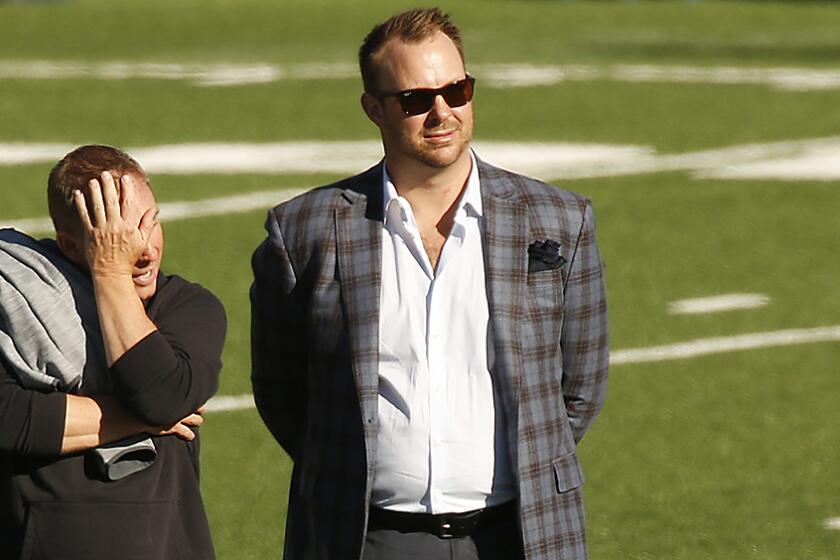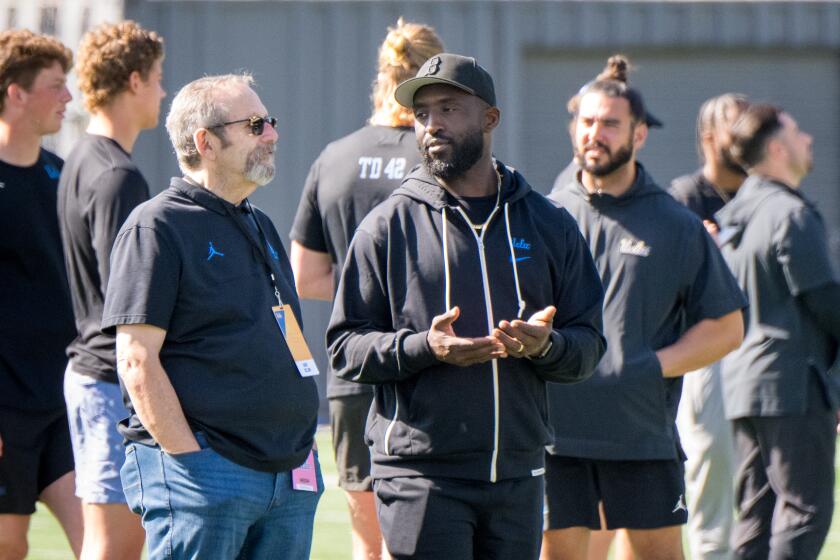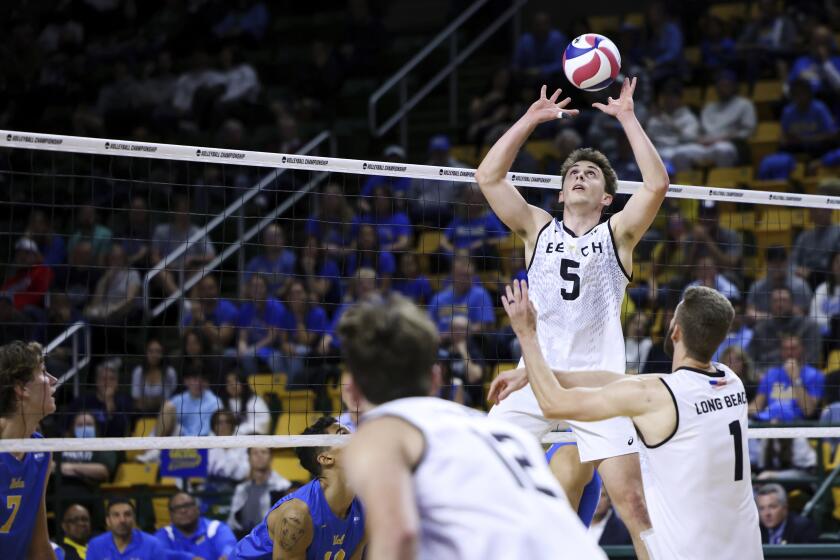A flu bug can quickly put a basketball team on defense
A stubborn flu bug had pestered the UCLA basketball team for weeks, hitting one player, then another. So when the Bruins gathered for dinner recently, their athletic trainer made an announcement.
“Hey, guys,” Carrie Rubertino Shearer recalled saying, “great opportunity to wash your hands right now.”
They all laughed, but she wasn’t joking. When it comes to basketball -- from high school through the pros -- influenza is the hidden opponent on everyone’s schedule.
This other hoops fever has been part of the sport’s folklore since Game 5 of the 1997 NBA Finals, when the Chicago Bulls’ Michael Jordan dragged himself out of bed to score 38 points against the Utah Jazz.
This season, flu-like symptoms have thinned rosters in Atlanta, New York and Indianapolis. They had the Lakers’ Kobe Bryant alternately vomiting, receiving intravenous fluids and scoring clutch baskets against the Cleveland Cavaliers last month.
Local college teams have been hit just as hard, with a handful of USC and UCLA players struggling through games leading up to the Pacific 10 Conference tournament at Staples Center this week.
“This year’s been unbelievable,” said Wally Blase, the trainer for the Atlanta Hawks. “In the last month, we’ve had four guys get really sick and three guys miss time.”
Sneezing and coughing, the occasional virus that morphs into gastrointestinal distress or worse -- athletes aren’t the only ones who suffer. Like everyone else, they encounter airborne and respiratory diseases in crowded places, but the nature of their sport can leave them especially vulnerable.
Through the heart of flu season -- roughly November to March -- they face constant play, practice and air travel.
The 82-game NBA schedule has the Lakers visiting seven cities in 12 days later this month. College players go a little easier with two games a week, but they must attend to schoolwork.
“Physical exhaustion can make one’s immune system less able to fight off infection,” said Tom Skinner, a spokesman for the U.S. Centers for Disease Control and Prevention.
Once a virus sneaks onto a team, it can spread quickly in showers, meeting rooms and on the court. As Lakers trainer Gary Vitti said: “We’re on top of each other all the time.”
Like many teams, the Lakers offer flu shots each season -- and not just for players. Coaches, trainers and ball boys -- even the broadcasters who follow the team -- are encouraged to get vaccinated.
Staffers continually wipe down the locker room with alcohol-based germicides. No one shares a cup or water bottle on the bench, and -- according to NBA policy -- when a player so much as pats a towel on his forehead, it gets tossed in the dirty laundry.
Teams run through 200 to 250 towels a game, Vitti said.
The rest of the time, the need for clean has trainers chanting a familiar refrain: Wash your hands. Don’t touch your face.
“It’s like another mom sometimes,” UCLA swingman Josh Shipp said of Shearer. “It’s like she’s nagging us.”
Not only does Vitti bug million-dollar athletes such as Bryant and Lamar Odom about using hot water and soap, he tells them to make sure they spend enough time under the faucet by saying their ABC’s while washing up.
The Hawks go so far as to fine players who show up at post-practice meetings or step into the team lounge without showering first. Blase muses about sanitizing the court.
“You see guys dribbling the ball, sneezing on their hands, then passing the ball,” he said.
Though prevention is key, it obviously isn’t foolproof.
Three members of the Indiana Pacers wound up in the hospital in December. USC forward Taj Gibson got sick in late January, his condition worsening to pneumonia.
The CDC advises people who fall ill to stay home from work or school until they are without fever for about 24 hours, a precaution Skinner calls a “very, very important point to combating influenza and other viruses like it.” The problem is, basketball doesn’t always afford that luxury.
The loss of one or two bodies can put a sizable dent in a team of five starters and a few key reserves, and fans buy tickets expecting to see their favorites in action. So the players get extra help.
When UCLA forward Nikola Dragovic came down with flu-like symptoms the day before a game at California, the team gave him a hotel room to himself and, as Coach Ben Howland said, “We were sending up ginger ales and water to him at 10 o’clock at night trying to calm down his stomach.”
Medical staffs keep vitamins and antiviral drugs such as Tamiflu on hand. The Hawks have already run through their prescription stockpile this season. Closer to tipoff, players often get intravenous fluids.
During that game against the Cavaliers, the Lakers hooked an IV to Bryant at halftime, coaxing him through a 19-point performance that included a crucial 13-foot jumper over LeBron James in the fourth quarter.
Against Washington earlier this season, ailing UCLA center Alfred Aboya remained on the trainer’s table long after everyone else had left Pauley Pavilion, trying to replace fluids he had lost on court.
“I was out of energy the first play of the game,” he said.
The need to keep players healthy becomes even more critical as teams head toward the NCAA Tournament -- March Madness -- and, later, the NBA playoffs. Trainers will continue to nag about eating right and getting as much rest as possible.
And there’s the personal hygiene issue. Shearer has taken to walking through the dinner line with hand sanitizer. Blase recently pushed a dispenser on a group of Hawks playing cards on the team plane.
“You can only control so much,” he said. “If you want to get technical about it, the players shouldn’t even be passing the ball to each other.”
--
Go beyond the scoreboard
Get the latest on L.A.'s teams in the daily Sports Report newsletter.
You may occasionally receive promotional content from the Los Angeles Times.




